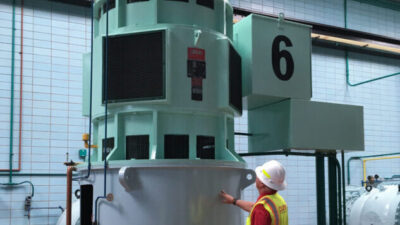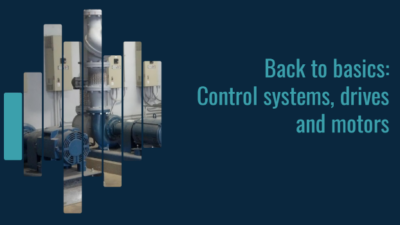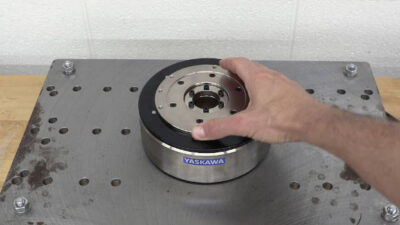The Sept. 27, 2017, “Electric motor basics” webcast presenter addressed questions not covered during the live event.
Rotation is an essential part in the act of pumping thus making the motor an essential component of any pump. The purpose of the electric motor is to create this rotation by converting electrical energy into mechanical energy. This webcast is an introduction into how motors work. Viewers will learn the basic principles of magnetism, electromagnetism, and magnetic flux; how the two primary components, the stator and rotor, form the basic operating principle of an induction motor; the operating principles for 3-phase and single-phase motors; the difference between synchronous and asynchronous motors; and motor torque and power—where torque and speed come from.
Presenter Reece Robinson, senior technical training specialist, Grundfos Pumps Corp., responded to questions not answered during the live Electric motor basics webcast on Sept. 27, 2017.
Moderated by Jim Swetye, technical training expert, Grundfos Pumps Corp.
Question: What materials are used for laminations? Which is best for producing the strongest field of magnetism?
Reece Robinson: Laminations are made of steel, specifically silicon steel, also known as electrical steel. The addition of silicon to steel makes the steel more efficient and faster in terms of building and maintaining magnetic fields.
Q: I’ve read that motors act as generators during a fault. What exactly happens during a fault that causes the motor to act as a generator?
Robinson: Actually, when the motor spins in the opposite direction, it essentially becomes a generator. Some controls use braking to slow motors down, which can cause a fault or trip of the control. In pump applications, if water flow is going back through a pump discharge, this can cause the pump to spin in the opposite direction. This can be due to a check valve not functioning or in some cases, sever water hammer can cause a sudden reverse of pump shaft direction.
Q: What is the reason again to use variable frequency drives (VFDs) for permanent magnet synchronous motors (PMSMs)?
Robinson: PMSMs are not designed for across-the-line starting, and require a drive. To provide the right amount of torque at a given current, the rotor position must be known. Currently, there is research being done for line-start permanent magnet motors.
Q: Are PMSMs single-phase or 3-phase?
Robinson: The motor itself is based on 3-phase power but the control (VFD) can be designed for single-phase or 3-phase input. For commercial pumps, for example, PMSMs are available for single-phase supply from fractional size motors to 3 hp; 3-phase sizes range up to around 15 hp.
Q: For PMSMs, do you need to install stray current protection for the motor/pump bearings?
Robinson: I have seen no evidence showing that PMSMs reduce or eliminate problems associated with bearing currents. I will say that bearing damage due to these stray currents (called “fluting”) occurs predominantly in larger motors (above 50 hp). Fluting also is more common in equipment that is poorly grounded and/or has a flexible type coupling between the driven equipment and motor. Many flexible type couplings result in a break in the metal-to-metal contact, which results in having a poor path to ground for those stray currents.
Q: Did you say it is not necessary to worry about motor overheating at low speeds, and did you mean lower than 25% speed?
Robinson: For variable torque loads (centrifugal pumps and fans), the torque reduces with the square of the speed, so, even though the fan at the end of the motor shaft is only spinning at 25% of the motor’s rated speed, the torque has been reduced to only 6.25% of the full-load torque. Motor overheating concerns have originated from constant torque type applications where high torque is required at all speeds.
Q: Can you discuss implications running a 50 Hz, 380 V induction motor at 460 V, 60 Hz and vice versa?
Robinson: If a motor is rated/nameplated at 50 Hz/380 V, it should not be operated at 60 Hz/460 V. For example, if the motor was rated at 10 hp (7.5 kW) at 50 Hz/380 V and had a rated speed of 2,900 rpm, it could certainly overload at 60 Hz/460 V as it would be spinning at approximately 3,480 rpm. The horsepower increases with the cube of the speed so that 10 hp (7.5 kW) could become 17.3 hp (12.9 kW). It’s generally more feasible to go down from 60 Hz/460 V to 50 Hz/380 V, especially because most modern induction motors are rated for variable speed. When controlled by a VFD, a 60 Hz/460 V motor will periodically operate at 50 Hz/380 V during the normal duty cycle. Many motors have dual ratings, both at 50 Hz and 60 Hz. It is always best to consult the motor manufacturer and also check with the driven equipment manufacturer as well to ensure operation is advisable.
Q: All other things being equal, which has a higher initial cost: an 1,800-rpm motor or a 3,600-rpm motor?
Robinson: A 4-pole (1,800 rpm) motor will require more material and cost to produce therefore will have a higher initial cost. The 1,800-rpm motor will also be heavier, which may incur a higher shipping cost as well, as possible increased cost to mount and support. But on the other hand, 4-pole (1,800 rpm) motors generally are more efficient, from 1% to 2% higher than 2-pole (3,600 rpm) motors. But remember that the initial cost and efficiency of the driven equipment must also be taken into consideration.
Q: How does the switching frequency/carrier frequency of the VFD affect motor operation and expected life?
Robinson: When the switching/carrier frequency of a VFD is increased, this will result in a rise in temperature for both the motor and drive, which will result in lower efficiency for both as well. The most common reason for increasing the switching frequency is to decrease the audible noise (sometimes known as “VFD whine”). If the equipment is of good quality and sized to allow for some wiggle room, carrier frequencies can be adjusted up with only minor impacts on added heat or loss of efficiency. As always, it is best to consult with the drive and equipment manufacturers (or industry experts) before making those changes.
Q: How do you determine a motor’s load?
Robinson: The load on the motor is based on the equipment connected to the motor. So, if the motor is connected to a pump, there will be a corresponding brake horsepower curve for that pump. If the pump is driven by a 10 hp (7.5 kW) motor for example, the actual load on the motor might only be 8 hp (6 kW). The amount of flow going through the pump will determine the load on the motor and that load will be shown on the pump performance curve (or fan curve if you’re looking at fans). If you’re evaluating a motor in the field for example, you can get an idea of the approximate load on the motor by measuring the current and voltage. If the full load amps (FLA) of a motor is 10 and the average current draw on each phase is 8, then that motors is running somewhere between 7.5 and 8.5 brake horsepower (bhp). There are formulas to determine motor performance in publications such as the Electricians Handbook and the Cameron Hydraulic Data Book, etc. Most motor suppliers can supply a motor performance curve that shows volts, amps, efficiency, rpm, and power factor as a function of load.



